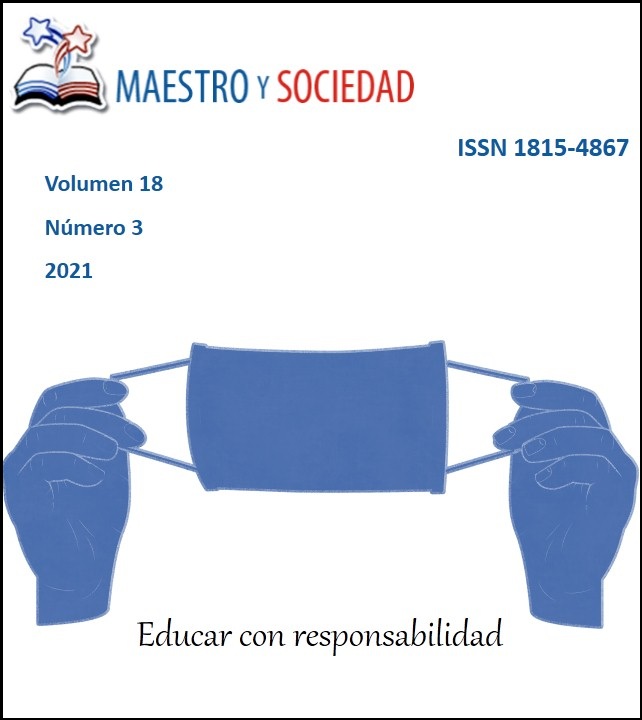Peru's role facing virtual education and new challenges by the Covid-19 pandemic
Array
Keywords:
Virtual Education, ICT, COVID-19, educational qualityAbstract
The Peruvian state assumes that the incorporation of Information and Communication Technologies into education requires thinking in advance about the objectives and challenges of education and subsequently determining in what way and under what conditions the presence of ICT contributes to it, in the context of COVID-19. The objective of this article is to determine the meaning of virtual education and the role of the Peruvian state that allows it to contribute more directly to improve educational quality from the challenges posed by the pandemic. The research is documentary and of an explanatory level that searches for information selectively in the sources available on the web. It is concluded that the Peruvian state must finance the development of significant, pertinent and sufficient digital content, as well as the training of teachers so that they have the necessary skills to use it.
References
2. Cueva, D. (2020). La tecnología educativa en tiempos de crisis. Revista Conrado, 341-348. Vol. 16, Núm. 74. Disponible en: https://conrado.ucf.edu.cu/index.php/conrado/article/view/1370
3. Faramiñan, G. J. (2020). Aspectos jurídicos del estado de alarma y la pandemia covid-19. Revista de Estudios Jurídicos, Vol. 8. Núm. 20. Disponible en: https://revistaselectronicas.ujaen.es/index.php/rej/article/view/5927
4. Guánchez, L. y Herrera, Y. (2020). La evaluación de los procesos de enseñanza- aprendizaje con uso de los entornos virtuales. Taller de Renovación didáctica universitaria, uso y diseño de medios tecnológicos. Publicaciones MPPEU, Caracas: Venezuela.
5. INEI (2021). (El Instituto Nacional de Estadística e Informática). Boletín informativo de la encuesta trimestral aplicada a la población del año 2021. Disponible en: https://www.inei.gob.pe/media/MenuRecursivo/boletines/enpove-2018.pdf
6. ISTE (2007), (International Society for Technology in Education, ISTE, 2007) Memorias sobre Estándares Nacionales sobre Tecnología Educativa (Docentes y alumnos). Disponible en: http://www.iste.org/document/5995743.html.
7. Montiel, C. (2020). Knowledge, practice and use of ICT for the networked educational environment. Revista Paraguaya de Educación a Distancia, 23-28. Vol. 8. Núm. 2. https://www.researchgate.net/profile/Carlos_Montiel5/
8. OCDE (2019), Are students ready for a technology-rich world? What PISA studies tell us, disponible en: http://www.oecd.org/document/31/0,2340,en_32252351_32236173_35995743_1_1_1_1,00.html.
9. Pedró, F. (2016), Aprender en el Nuevo Milenio: un desafío a nuestra visión de las tecnologías y la enseñanza, OECD-CERI. Paris: Francia.
10. Pérez, C. (2020), Technological revolutions and financial capital: the dynamics of bubbles and golden ages, Cheltenham, Edward Elgar. Fundación Santillana. Disponible en: https://www.santillanalab.com/recursos/Tecnologias_para_la_transformacion_de_la_educacion_1.pdf
11. Prensky, M. (2019), Digital Natives, Digital Immigrants, II: Do they really think differently?, disponible en: http://www.marcprensky.com.
Zanoni, L. (2008). El imperio digital. El nuevo paradigma de la comunicación 2.0, Buenos Aires, Ediciones B, disponible en: http://elimperiodigital.com.ar.
Published
How to Cite
Issue
Section
License
This journal provides immediate open access to its content, based on the principle that offering the public free access to research helps a greater global exchange of knowledge. Each author is responsible for the content of each of their articles.



























 Universidad de Oriente
Universidad de Oriente 